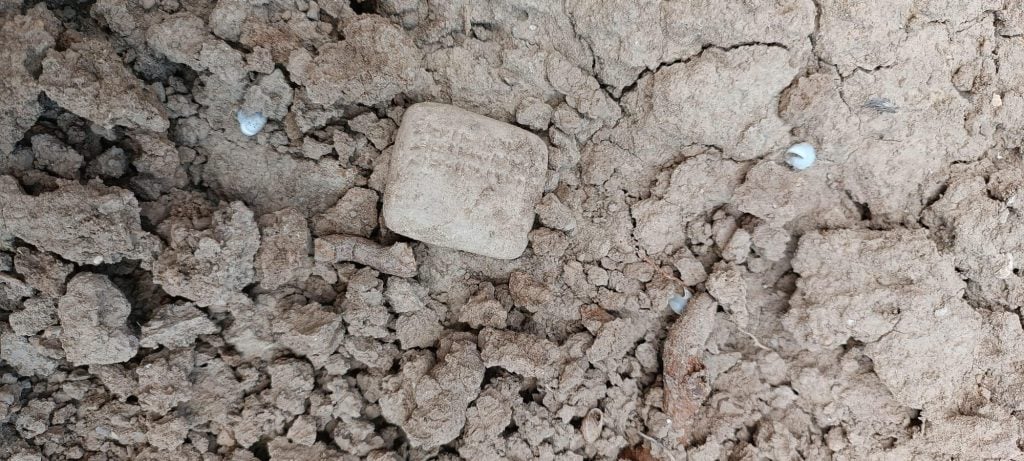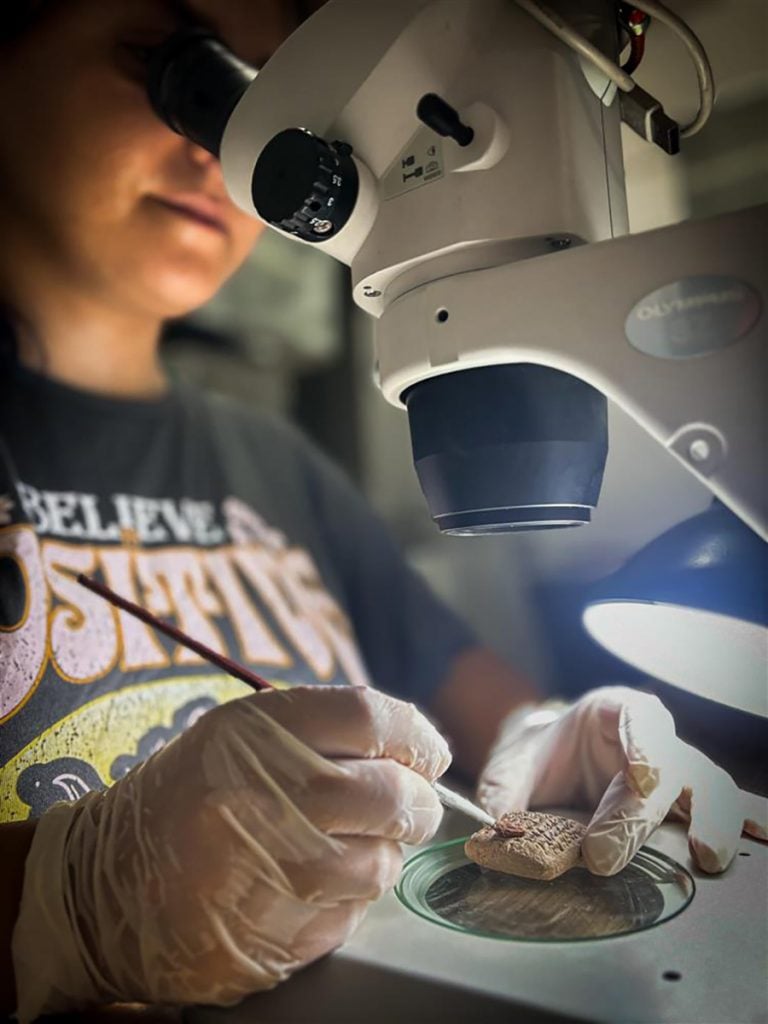Millennia ago, someone in the province of Hatay in Turkey made a shopping list that would surprisingly survive the ravages of time.
During restoration works after an earthquake, archaeologists digging around the Aççana Mound in the old city of Alalah, in Hatay’s Reyhanlı district, have unearthed a small tablet. It measures a mere 1.6 by 1.3 inches and comes in at 28 grams. Believed to date back to the 15th century B.C.E., the artifact’s surface is carved with cuneiform script in the ancient language of Akkadian.
The Aççana Mound in the old city of Alalah. Photo courtesy of Turkey Ministry of Culture and Tourism.
Now considered extinct, Akkadian is the earliest known Semitic language, related to Arabic and Hebrew, with Sumerian, Babylonian, and Assyrian dialects. It was in use in Mesopotamia during the reign of the Akkadian dynasty from around 2334–2154 B.C.E. The language was first deciphered in the 19th century; in 1921, the first standard dictionary for the Akkadian language was compiled by researchers from the University of Chicago.
According to Turkey’s Ministry of Culture and Tourism, initial readings of the tablet have made out “records regarding a large amount of furniture shopping.” The list includes several wooden tables, chairs, and stools, as well as a log of who purchased and received these items.

The cuneiform tablet unearthed in Turkey. Photo courtesy of Turkey Ministry of Culture and Tourism.
The team is still working to study more of the text, but has already deemed it key in shedding new light on the everyday economics of ancient life.
“We believe that this tablet… will provide a new perspective in terms of understanding the economic structure and state system of the Late Bronze Age,” said Mehmet Ersoy, the country’s minister of culture and tourism, in a social media post. “We are working with great diligence to pass on the rich heritage of Anatolia to the future generations.”

The cuneiform tablet unearthed in Turkey undergoing analysis. Photo courtesy of Turkey Ministry of Culture and Tourism.
The relic joins more than half a million tablets bearing Akkadian text that have been unearthed in locations from Iraq to Egypt to Anatolia. This Akkadian corpus, according to Yale University, far surpasses that of extant classical Latin works. That collection spans treatises, hymns, scholarly studies, legal documents, royal inscriptions, and daily correspondence, and boasts a rich literature that encompasses the biblical flood narrative and the Epic of Gilgamesh.
Follow Artnet News on Facebook:
